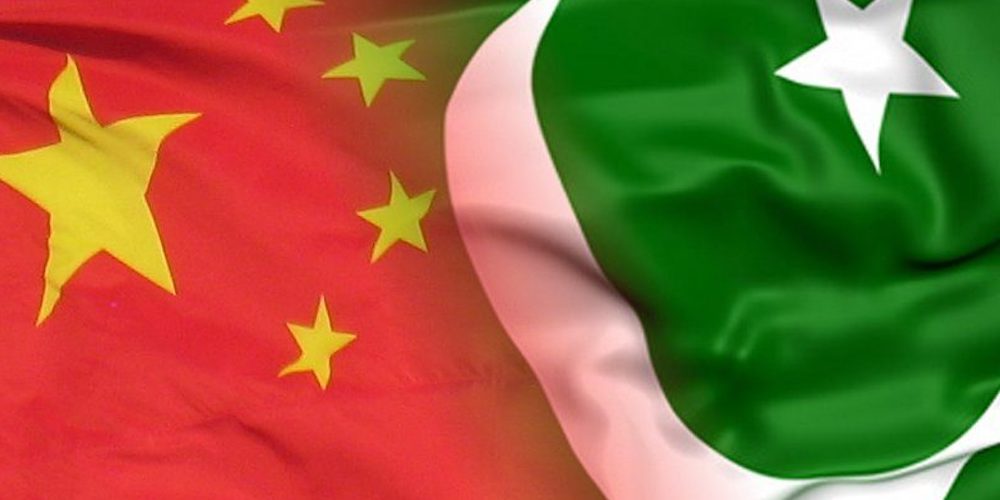RIGHT ANGLE – Limits of China-Pakistan Alliance

The role of China in the latest round of skirmishes between India and Pakistan has once again revived the debate in the strategic circles whether Beijing will be an active participant in future Indo-Pak conflicts.
The point that is being raised is whether India should be prepared for a “two-front challenge” from China and Pakistan simultaneously.
But then, the fact is that India has always faced this challenge in all the wars imposed on it by Pakistan. In that sense, it is not exactly a new challenge.
After all, the concept of a two-front challenge has broadly two dimensions or levels. It could be what experts call “ collaborative” or “collusive”. In the “collaborative” front, one country openly aids the other militarily in a coordinated manner; they fight jointly either at one front or at different fronts separately, forcing the enemy to divide its resources and attention.
In the case of the “collusive front”, one country aids the other morally, politically and militarily through material and logistics support, either openly or covertly.
Of course, the two are not exclusive as the transition from the collusive threat to the collaborative threat could occur seamlessly. But so far, China seems to have followed the collusive approach, if the history of various Indo-Pak conflicts are any indication.
When one is talking of China, it is the People’s Republic of China led by the communists that was established on October 1, 1949. So, one may overlook Beijing’s role in the first Indo – Pak war in 1947-48. That was the time when China was embroiled with the civil war between the “nationalists” and communists.
The second Indo-Pak war began on August 5 1965 and ended in a United Nations-brokered ceasefire on September 23, 1965, with the active involvement of both the United States and then Soviet Union (USSR).
Of course, Pakistan continued violating this ceasefire even later and it accused India of doing the same, but things did not go beyond control. In January 1966, the two countries signed the “Tashkent” declaration, brokered by the USSR, to resolve the war and improve bilateral relations.
As regards the Chinese role in this war, few facts are notable. Three years before ( 1962), India and China had fought a war. Following that China’s relations with Pakistan turned northward. On March 2 1963, the two signed an agreement in Beijing, with Islamabad graciously ceding a portion of Indian territory in Pakistan-occupied Kashmir (POK) to China. This area, known as the Shaksgam Valley or Trans-Karakoram Tract, was roughly 5,180 square kilometers. India does not recognize this agreement and claims sovereignty over the ceded territory. Since then, China has linked up the old Silk Route Highway where it runs from Sinking to Gilgit in close proximity to the northern region of Ladakh.
In fact, China’s Belt and Road Initiative (BRI), particularly the China-Pakistan Economic Corridor (CPEC), passes through this region, which India considers as its territory but under illegal Sino-Pak control.
Naturally, therefore, during the 1965 India-Pakistan War, China adopted a position of strong support for Pakistan. It even issued verbal threats to enter the war if Indian troops did not cease their activities on the front of Sikkim( then India’s protectorate country; it joined India to become a full-fledged state on May 16, 1975). This was said to have constrained India to retain five of its seven mountain divisions on its northern borders. Even the other two divisions were kept only in reserve and were not put on the frontline against Pakistan until the ceasefire was signed.
However, all said and done, China did not participate in the war, limiting itself to provide only moral and political backing to Pakistan.
The third Indo-Pakistan war began on December 3, 1971 and ended on December 16, 1971 with the surrender of Pakistani forces to India in Dhaka. But then, in the movement for Bangladesh since the beginning of the year and the consequent brutal suppression by the Pakistani forces in what was then its eastern wing had resulted in thousands of Bengali refugees migrating into India.
The Indian Army crossed the international border into East Pakistan, only after being attacked by Pakistan in the Western sector, but before that it was an open secret that India had provided training, resources, and weapons to the Bangladeshi freedom fighters.
By then China’s relations with Pakistan had been cemented further , with Islamabad playing a role in organising the historic trip by late Henry Kissinger, then U.S. Secretary of State, to Beijing, leading to the Sino-American entente. Simultaneously, Beijing’s relations with Moscow had worsened like never before. Besides, India and the USSR had concluded on August 9, 1971 “the Treaty of Peace, Friendship, and Cooperation”, much to the anguish of Beijing.
It is against this background that in April 1971, Chinese premier Chou En Lai had sent a letter to Pakistani rulers. Among others, it said that East and West Pakistan was one of the “basic guarantees” for the construction of Pakistani prosperity, that the separatist movement in East Pakistan was a “handful movement” that desired to sabotage Pakistani unification, that “broad masses of the people” had no leaning whatsoever in the direction of separatism, and that India, along with Russia, were guilty of “gross interference” and exploitation of Pakistan’s internal affairs.
Most importantly, Chou assured China’s total support to Pakistan in the event the “State and sovereignty and national independence” of Pakistan was threatened “by the aggression of the Indian expansionists”.

However, China did not intervene militarily during the War in 1971, limiting itself again to providing Pakistan weapons and equipment and allowing Pakistan Air Force flights eastwards to over-fly from its territory.
Besides, it is said that during the last days of war in East Pakistan, Chinese rescue ships were assembled in the Ganga Delta for the evacuation of the Pakistani army in East Pakistan.
In other words, the Chinese armada was in the Bay of Bengal during the War. Apparently, Moscow had advised Delhi not to attack the Chinese ships, given the possibility of their presence only for evacuation of the Pakistanis from what was to become Bangladesh.
Incidentally, on December 16, 1971 China gave its final statement in support of Pakistan when Pakistani forces surrendered, stating: “The Soviet Government has played a shameful role in the war of aggression launched by India against Pakistan. The whole world has clearly seen that it is the backstage manager of the Indian expansionists. For many years the Soviet Government has energetically been fostering the Indian reactionaries and abetting India in its outward expansion.
“The separation of East Pakistan is an event which marked the commencement of endless strife on the Subcontinent and the beginning of India’s ultimate defeat”.
Be that as it may, there were independent reports that said that in 1971, the “PRC had dispatched 200 military instructors to Pakistan for the purpose of the training of Pakistani troops for guerilla warfare.”
Besides, in the final week of the Indo Pak. War, “China supplied 200,000 rounds of anti-craft and tank ammunition for Pakistan.”
Some studies estimated that the free Chinese arms assistance of Pakistan in 1971-72 consisted of 225 T-59 tanks, one squadron of II-28 bombers, and four squadrons of MIG-19 interceptors, along with “an unspecified number of river boats and coasters and Chinese assistance in the construction of two major ordnance factories.”
But the point to note is that China did not opt for direct military intervention and did not carry out the threat of direct involvement that Chou had made in his letter in April in the eventuality of a challenge to Pakistan’s sovereignty and integrity.
During the Kargil War ( semi-war?) in 1999, China was arguably “neutral”, if compared to its utterances in 1965 and 1971. One of the most plausible reasons, it is said, was the presence of battle-hardened Uyghurs along with the Pakistani intruders in the Kargil hill.
China had protested to Pakistan on aiding the Islamic fundamentalist rebels in its Muslim-majority regions of Xinjiang and Ningxia Hui. Besides, after the break-up of the Soviet Union , Muslim fundamentalism was on the increase in not only Central Asia but also in Pakistan, including its occupied areas of Kashmir that China had taken over in 1963. China was for combating this Islamic “jihadi influence”.
The only concrete military support that China provided to Pakistan during the Kargil war was its permission to to the Pakistani Air Force flights to overfly its territory. But China insisted on a pullout of both Indian and Pakistani forces to pre-conflict positions along the Line of Control (LOC) and settling border issues peacefully.It appealed to both India and Pakistan to show restraint.
Similarly, if one keeps apart the Chinese Social media and pro-China analysts ( actually they are more anti-India than pro-China in the western media and the channels like Al Jazeera), the official Chinese reaction during the latest four-day conflict ( May 7-10)that India has named “Operation Sindoor”, has been the same circumspection.
Beijing described the Indian strikes on Pakistan’s terrorist centres as “regrettable” and called on India and Pakistan “to avoid worsening the situation” and “remain calm and exercise restraint”.
In China’s official reactions, one did not witness the language that one usually witnesses in issues pertaining to the Taiwan Straits and the Philippines in the South China Sea.
But then, China is a master in information warfare. While projecting itself as a responsible global power advising peace and stability, it reveals the inner intentions through bloggers and experts in all forms of media, including social media. And if one goes by the latter, the Chinese reactions to the Indian actions have been really nasty and brutish.
The Chinese have declared Pakistan the clear victor, thanks to the weapons it has supplied to Islamabad in recent years, particularly the J-10 aircraft to launch air-to-air missiles against Indian fighter jets.
It may be noted that China has, apparently, sold Pakistan $8.2 billion in arms since 2015. China was the world’s fourth-largest arms exporter from 2020-24, and Pakistan was China’s top customer. Islamabad consumed 63% – nearly two thirds – of Chinese weapon sales in that period.
If anything, all the above examples prove that China , so far, has remained a “collusive” partner of Pakistan in the “two-front” challenges to India.
There seems to be only a remote possibility of any transition from this situation to a “collaborative one”, given China’s global competition to be recognized as a benevolent super power and its reluctance to join a two-front war against India that could be incredibly prohibitive and strategically vulnerable to the exchanges of nuclear weapons.
All told, despite the tall claims of “Pakistan-China friendship is higher than the Himalayas and deeper than the ocean” , China has not chosen Pakistan as yet for a formal military pact like a mutual defense treaty, something the United States has done with many.


